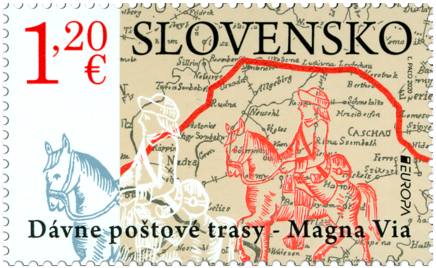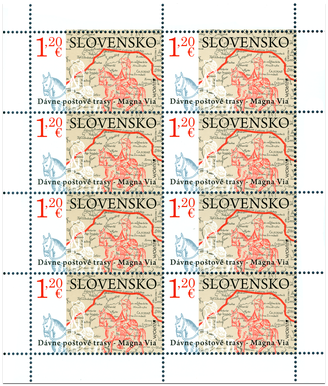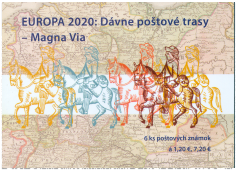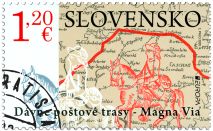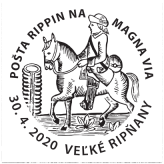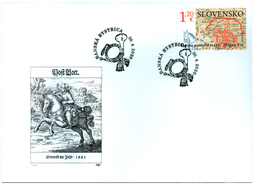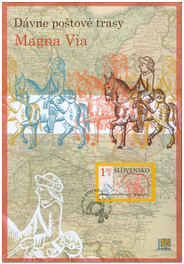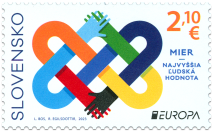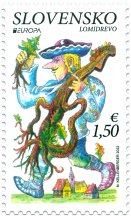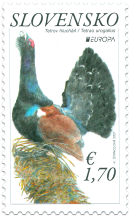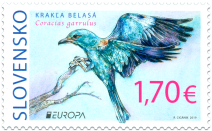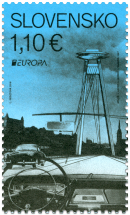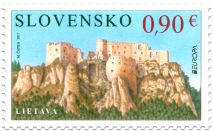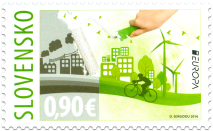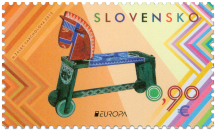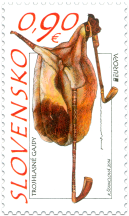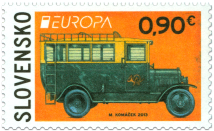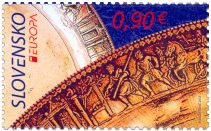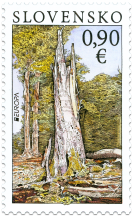711 Date of issue
30.04.2020 Face value
1.20 € Sell price
1.20 €
Roads are an inseparable part of human life. Linking settlements from time immemorial, they were also used for the transportation of goods and the dispatch of important information by messengers. Although, at the first half of the 16th century, Hungary was at the threshold of a new era, this was accompanied by the permanent threat of attack by the Turkish as a result of the loss of the Battle of Mohács in 1526. Ferdinand I and the richest Hungarian aristocrat of the time, John Zapolski, duelled for the Hungarian crown. As they were both crowned, Hungary was ruled by the two kings until the death of Zapolski in 1540. This turbulent period also saw the beginnings of an organised postal service in Hungary.
Ferdinand I began to change the state administration of Hungary and to establish postal routes. In 1528 Buda and Vienna were connected via a route with 10 postal stations. However, it ceased to exist after a year when Buda was seized by the Turkish army. After 1531 it was necessary to provide a postal route between Bratislava and Vienna because in July 1531 the Hungarian Chamber moved its activities in to Bratislava. In 1552 the Court Postmaster, Matej Taxis, on the command of Ferdinand I, began the organisation of a route from Vienna to Transylvania. Owing to the Turkish occupation of the southern territories, this important postal route passed through western and northern Slovakia to Košice and from there to the Transylvanian city of Sibiu. After the loss of the emperor’s authority over Transylvania in 1556, only the route from Bratislava to Košice remained unchanged during the entire 17th century, with some postal stations closed down and some new ones established. The development of the route through the 18th century resulted in the opening of stations in new regions. Originally individual postal stations were established every two miles of that time (approximately 15 km) and included facilities that provided catering, accommodation, stables and harness service.
In 1999 the Association Magna Via was founded. Its role is to acquaint domestic and foreign visitors with the cultural and historical value of this great postal route.
Leo Lichvár
Similar products
793 Date of issue
09.05.2023
765 Date of issue
02.05.2022
741 Date of issue
07.05.2021
683 Date of issue
03.05.2019
661 Date of issue
04.05.2018
635 Date of issue
05.05.2017
611 Date of issue
05.05.2016
588 Date of issue
05.05.2015
563 Date of issue
05.05.2014
538 Date of issue
09.05.2013
515 Date of issue
04.05.2012
497 Date of issue
06.05.2011
© 2024 POFIS - Postal philatelic service. All rights reserved

